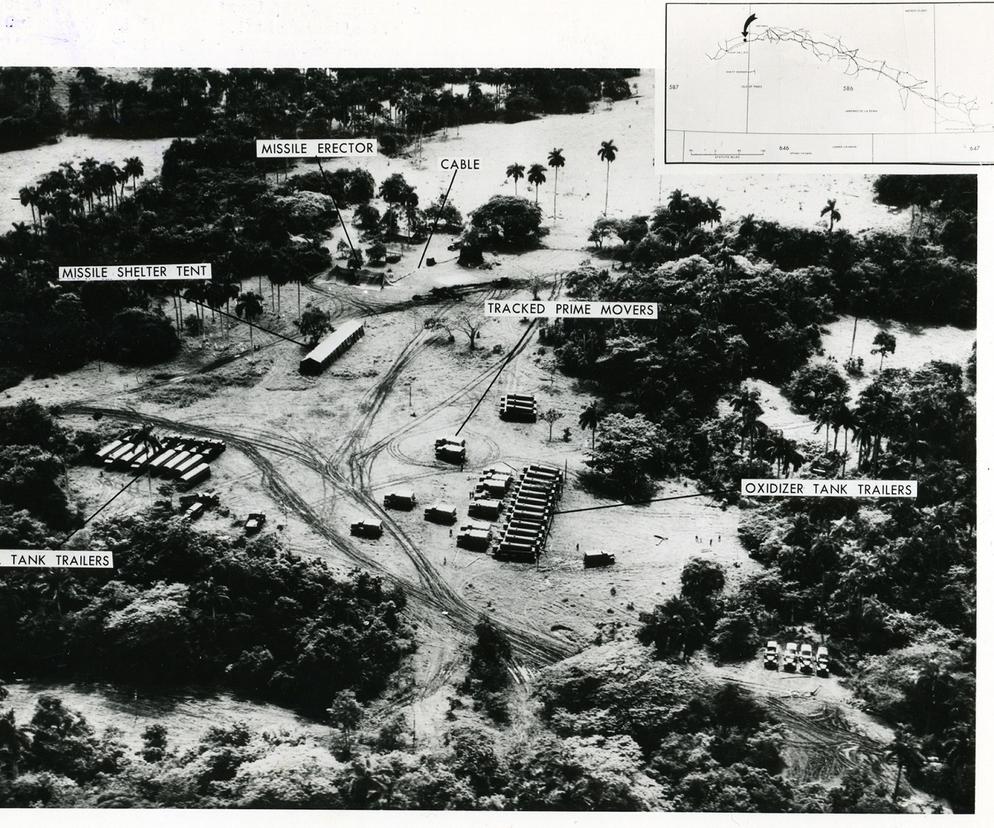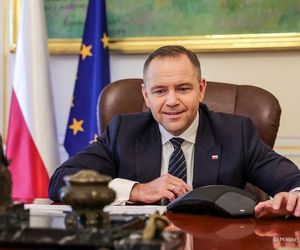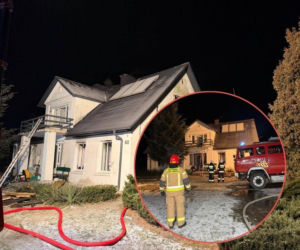The Cold War began with the conflict about the Central-Eastern Europe, the conflict about Poland. This is the place of which Winston Churchill, the prime minister of Great Britain, spoke in his lecture at Fulton. He said that the iron curtain had descended from Szczecin to Trieste. It was Poland that had the second biggest army and the geographical location Russia needed to march west.
The involvement of Polish People’s Republic in the Warsaw Pact was the main reason behind the poverty and the economic collapse of the economy of Polish People’s Republic. There is no country that can exist and develop normally when 30 percent of its national income is regularly spent on the military needs of its so-called Great Neighbour. In the satellite states, much like in USSR, citizens were supposed to be poor, but the army and industry were to be prepared to realise the communist idea “To march on towards the victory of communism”. From the perspective of Warsaw, the Bolshevik slogan from 1920, “through Poland’s dead body to the heart of Europe” was particularly significant. It remained in force until the end of the Cold War.
Change of the Soviet strategy
Following the Cuban Missile Crisis, Moscow lost the option to install medium-range ballistic missiles on the island that would enable it to launch a nuclear attack on the USA. At that time, some of the missiles with nuclear warheads targeting NATO bases and civilian facilities in Europe arrived in Poland. The fact that it was a violation of the international law did not bother Moscow or the Polish communists.
The American and NATO politicians had been aware of the risk of Soviet Union’s aggression since 1945. They were, however, considering the possibility of a conventional war in which nuclear weapons would not be used in Western Europe. Meanwhile, such a threat was real during the Brezhnev regime (1964-1982), when Soviet imperialism was truly powerful., The entire archive of Soviet Marshal Viktor Kulikov was found in the safes of the Supreme Command of the GDR People's Army in Strausberg. Before he became commander-in-chief of the Warsaw Pact armies, Kulikov held the post of commander of the Soviet Army Group in Germany. The East German generals therefore regarded Kulikov as their special protector. It was for this reason that he had his own separate section in the National People’s Army’s archive, needless to say, it was super-secretive. Among the documents, a speech from 1983 has been preserved. At the time, Kulikov was a member of the Central Committee of the CPSU, First Deputy Minister of Defence of the Soviet Union and Commander-in-Chief of the Warsaw Pact troops. At a briefing of the top-level Soviet and East German commanders, in the presence of SED Central Committee General Secretary Erich Honecker, the Soviet marshal presented a vision of aggression against Western Europe:
/RAMKA/"The future war will be waged uncompromisingly until the complete destruction of the enemy. The implementation and success of our strike require us to consider the use of our entire arsenal of weapons of mass destruction”. /ramka/
The date of Kulikov's statement is notable – February 1983. At that time, it appeared that the Russians were victorious over the insurgents in Afghanistan, while in Poland the Solidarity uprising was pacified, and the conditions of martial law guaranteed the safe transit of Soviet transports from the depths of the USSR to the West.
False brotherhood in arms
In one variant of their plans for aggression against NATO, the Soviet strategists intended to use atomic weapons immediately, in the very first seconds and minutes of the war. The Soviet General Staff maps found in the former GDR show a line drawn along Germany's western border as a strategic and operational-tactical nuclear attack frontier. Under the code name 'Brotherhood of Arms', gigantic military manoeuvres took place in the autumn of 1980, in the point where the Warsaw Pact and the North Atlantic Pact met, i.e. along the border of the GDR and Germany.
Soviet, East German, Czechoslovakian, and Polish units were involved. Those manoeuvres, led by USSR Defence Minister Marshal Dmitry Ustinov, were an important rehearsal in preparations for aggression against Western Europe. The surviving secret documents show that the USSR expected to win World War III.
/RAMKA/ More than one million ground troops, as well as two air armies and warships took part in the manoeuvres. The main strike force was a posed attack, using 840 tactical medium-range missiles with nuclear warheads. /ramka/
As early as in the first minute of the war, 320 of these missiles were to be fired at NATO's sensitive command posts in Germany, Belgium, the UK, and Denmark. Targets included airfields, nuclear depots, military infrastructure, communications, naval bases, civilian transport hubs in major European cities. The Soviet marshals assumed that the first attack would be decisive. Maps of Germany, Belgium, Denmark, and the Netherlands, drawn up by Soviet staffers, are marked with red symbols of the rockets and bombs that were to fall in the first minute. Although they were generally aimed at military targets and even though they were not the most powerful nuclear warheads, the consequences of such a nuclear attack for hundreds of millions of people in Western Europe would have been terrible. This planned ruthlessness took Western experts by surprise. They assumed that, in starting World War 3, the Russians would initially use only conventional weapons and not nuclear weapons.
Top secret assault plans
It was presumed that the Warsaw Pact marshals and generals would want to capture the rich infrastructure of Western European countries in the best possible condition. NATO commanders therefore optimistically and unrealistically estimated that they would be able to fight back the Soviet offensive by evading the first strike or even launching a counterattack. Those calculations prepared by the politicians and military of the NATO countries proved naïve in the light of the Warsaw Pact secret documents that were revealed.
The Baltic coast and the area further down the North Sea to the English Channel were a special area of attack for the Warsaw Pact armies. An armoured wedge of the Soviet Army and the People's Polish Army was to press on at the head of the Communist bloc army's offensive. Among other things, the Poles were expected to occupy the German district of Schleswig-Holstein and then capture Denmark. Before that, this relatively small area was to be crushed with 76 nuclear missiles. This is what the secret operational maps reveal.
According to Soviet planners, combat activities in Europe were to be limited in time and area. The war was to end within a month at most. The United States, threatened by a Soviet long-range ballistic missile attack, was to be neutralised outside Europe.
It was expected that a surprising nuclear attack lasting several minutes, followed by the first phase of the offensive – with one million two hundred thousand Soviet, Polish, and East German troops crossing the borders of Germany – would take place on the first day of Soviet aggression. As early as on the first day, the armoured mass was to join the battle – twenty thousand tanks and twenty-five thousand armoured personnel carriers.
On the second day, the battle formation was expected to be extended. More Warsaw Pact troops would enter the battle, another million in total.
On the third day of the Soviet offensive, one of its main objectives was to be achieved, namely, the entire territory of West Germany and Denmark would be captured.
On the twelfth to fourteenth day of the war, it was assumed that the Netherlands, Belgium, Luxembourg, and some parts of France would be captured. Between the fourteenth and thirtieth day of aggression against Europe, Italy, Norway, Great Britain, intimidated and blackmailed by a nuclear attack, were expected not to actively join in the defence against communist aggression. Thirtieth and final day of the war in Europe was to see the Warsaw Pact reach the Atlantic coast. France would be either occupied or neutralised.
It was those very plans that a modest and unassuming lieutenant colonel on the General Staff, Ryszard Kuklinski, whose career accelerated under the influence of Marshal Viktor Kulikov, decided to pass on to the US. As a liaison officer between the General Staff and the Warsaw Pact command, he had access to this terrifying knowledge.
Filip Frąckowiak, director of the Cold War Museum
The next issue will feature the following part: How a Pole prevented the outbreak of World War 3.
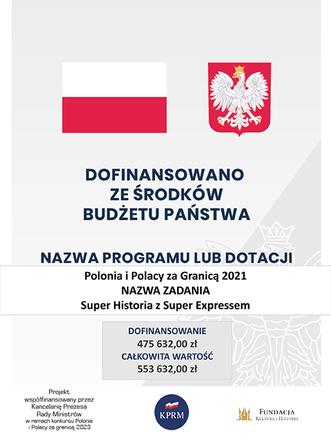
i
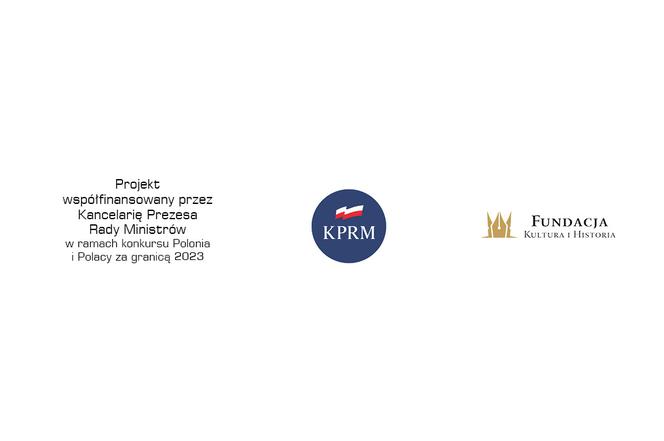
i

